Are 360 cameras worth it? If you’re an avid photographer or videographer, you’ve probably heard about 360 cameras. These cameras capture everything around them, allowing you to create immersive, panoramic photos and videos. But are they worth the investment?
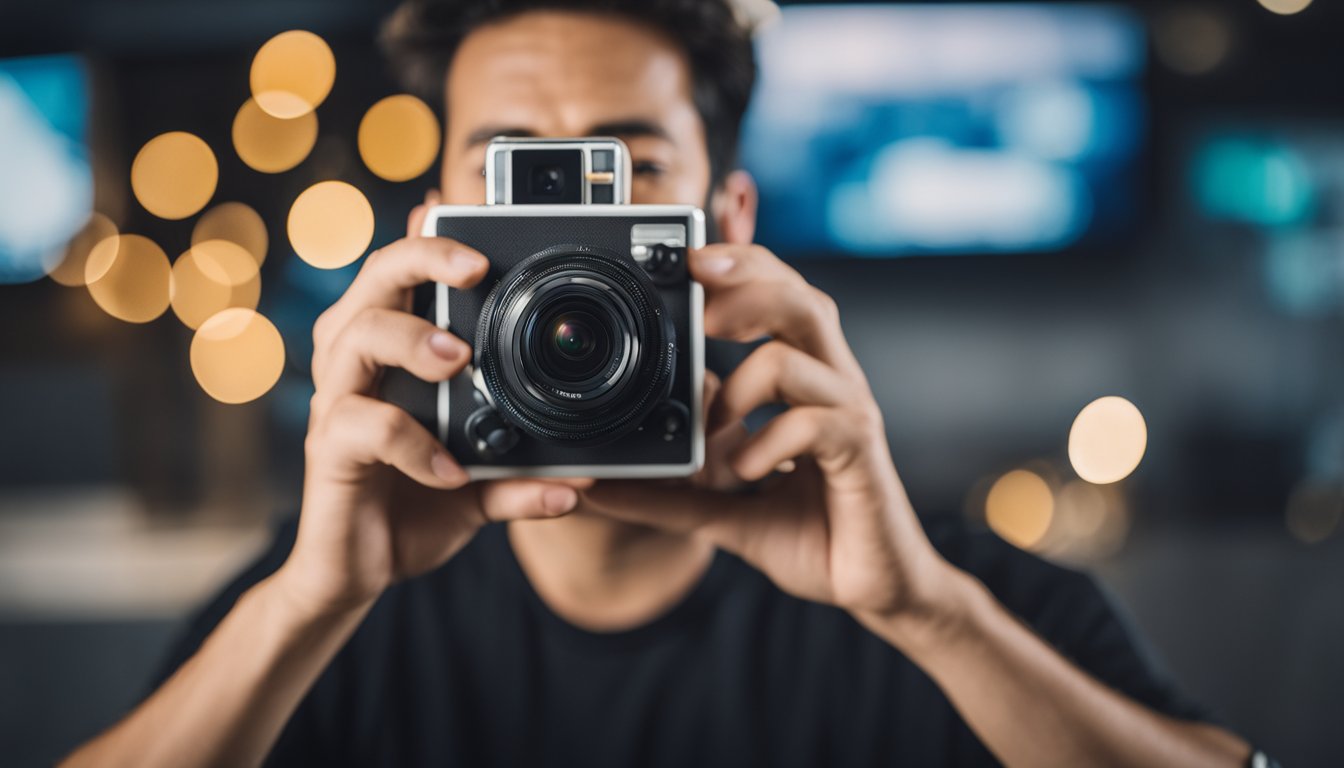
360 cameras offer a unique perspective that traditional cameras cannot match. They allow you to capture the entire scene, giving viewers the ability to look around and explore the environment. This makes them a great tool for real estate agents, travel bloggers, and anyone else who wants to showcase a location in a more immersive way. However, 360 cameras are not without their drawbacks.
One of the main cons of 360 cameras is their price. While there are some affordable options available, the more advanced models can cost several hundred or even thousands of dollars. Additionally, 360 cameras require specialized editing software and can be tricky to use, especially for beginners. So, are 360 cameras worth it? Let’s take a closer look.
Key Takeaways
- 360 cameras offer a unique perspective that traditional cameras cannot match.
- 360 cameras are a great tool for real estate agents, travel bloggers, and anyone else who wants to showcase a location in a more immersive way.
- While 360 cameras can be expensive and require specialized editing software, they are worth considering if you want to take your photography or videography to the next level.
What Are 360 Cameras?
https://www.youtube.com/watch?v=WtAiEeZiYfs&embed=true
If you’re not familiar with 360 cameras, they are devices that capture a 360-degree view of a scene. This means that they capture everything in every direction at once, making them ideal for creating immersive photos and videos.
Understanding 360-Degree Cameras
360 cameras use multiple lenses to capture a full view of the surroundings. The lenses are strategically placed around the camera body to provide full coverage of the scene. Once the images are captured, they are stitched together to create a seamless, panoramic view.
These cameras are designed to capture everything around you, from the ground to the sky. They are perfect for capturing landscapes, cityscapes, and events. Additionally, they can be used to create virtual tours and immersive experiences.
Evolution of 360 Cameras
360 cameras have come a long way since their inception. Early models were bulky and expensive, making them difficult for the average person to use. However, with advances in technology, 360 cameras have become more affordable and user-friendly.
Today, there are many different types of 360 cameras available, ranging from professional-grade cameras to consumer-level models. Some cameras are even designed to work with smartphones, making it easy to capture and share 360-degree photos and videos.
Overall, 360 cameras are an exciting technology that can be used in a variety of ways. Whether you’re a professional photographer or just looking to capture your next vacation, a 360 camera can help you create immersive and engaging content.
Pros and Cons of 360 Cameras
https://www.youtube.com/watch?v=r1haBj2p0uU&embed=true
Advantages of 360 Cameras
If you’re looking for a new way to capture your memories, 360 cameras might be worth considering. Here are some advantages of using 360 cameras:
- 360-degree photos and videos: With a 360 camera, you can capture everything around you in a single shot. This means you won’t miss anything and can relive the moment as if you were there again.
- Increased resolution: Many 360 cameras have improved sensors that allow for superior image quality, even in challenging lighting conditions. This means your photos and videos will be crisp and detailed.
- Virtual Reality (VR) content: 360 cameras are perfect for creating VR content, allowing you to immerse yourself in the scene and explore it in detail.
- Creative options: 360 cameras offer a range of creative options, such as the ability to add filters and effects to your photos and videos.
Limitations of 360 Cameras
« Camera 360 Before and After: Transform Your Photos with One Click
Best 360 Camera for Race Car: Capture Every Angle of Your High-Speed Adventure »
While 360 cameras have their advantages, they also have some limitations. Here are some things to consider:
- Image quality: While some 360 cameras have improved sensors, others may not offer the same level of image quality as traditional cameras. It’s important to research and compare different models to find one that meets your needs.
- Stabilization: Some 360 cameras may not have effective stabilization, which can result in shaky footage. Look for cameras with built-in stabilization or consider using a stabilizer or tripod.
- Low light performance: Due to the nature of 360 cameras, they may not perform as well in low light conditions. This can result in grainy or blurry footage.
- Waterproofing: Not all 360 cameras are waterproof, so if you plan to use your camera in wet conditions, make sure to choose a model that is water-resistant or waterproof.
Overall, 360 cameras can be a fun and creative way to capture your memories in a new way. However, it’s important to consider the limitations and do your research before making a purchase.
360 Cameras vs Traditional Cameras
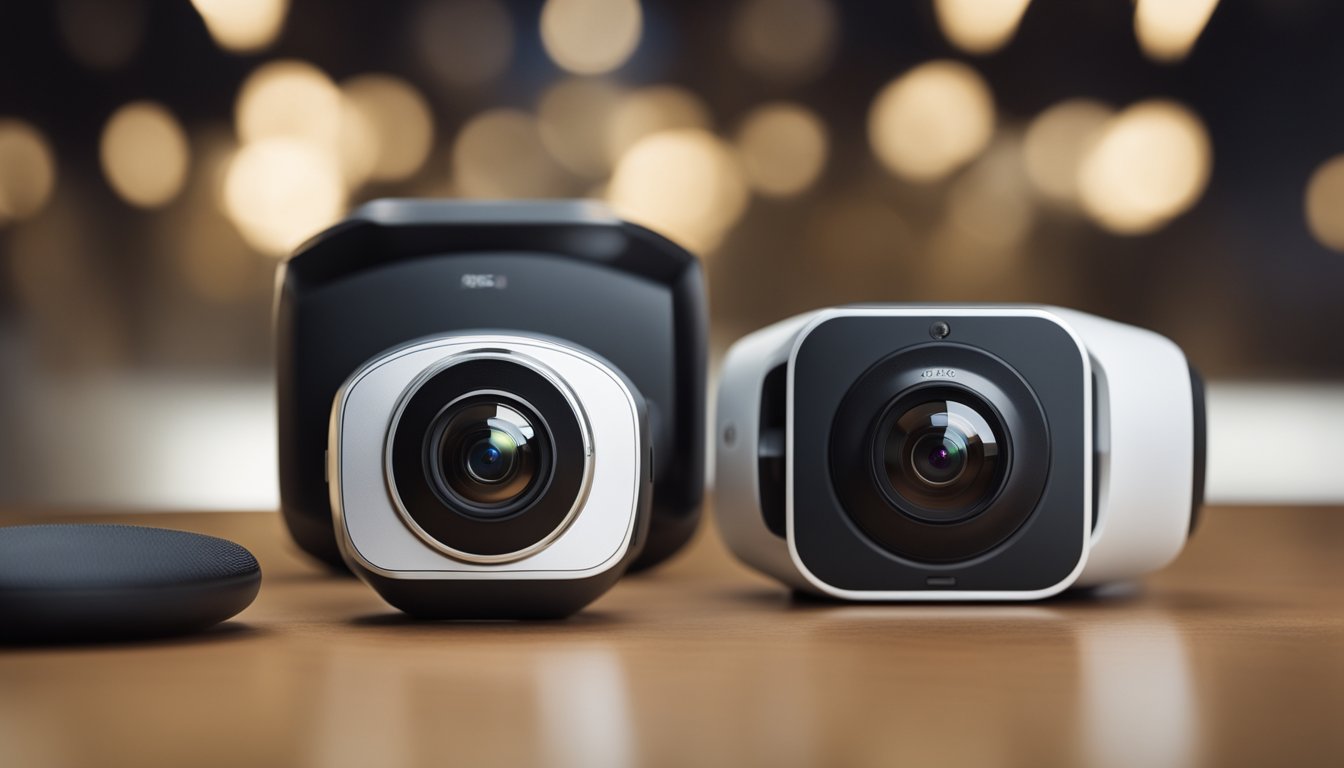
Comparing Camera Types
When it comes to choosing between a traditional camera and a 360 camera, there are a few key differences to consider. Traditional cameras are designed to capture still images or traditional video. They are great for capturing a specific moment in time, and they offer a high level of control over framing and image quality. On the other hand, 360 cameras are designed to capture a full 360-degree view of the world around you. They are great for capturing immersive experiences and allowing viewers to explore a scene in a more interactive way.
Use Cases for Each Camera Type
Traditional cameras are ideal for capturing still images and traditional video. They are perfect for capturing a moment in time, such as a family portrait or a landscape shot. They offer a high level of control over framing and image quality, allowing you to capture exactly what you want. They are also great for professional photographers who need to capture high-quality images for their work.
360 cameras, on the other hand, are ideal for capturing immersive experiences. They are perfect for capturing events such as concerts or sporting events, where viewers can explore the scene in a more interactive way. They are also great for capturing travel experiences, allowing you to create a virtual tour of a location. While the image quality of 360 cameras may not be as high as traditional cameras, they offer a unique perspective that traditional cameras cannot match.
In summary, if you are looking to capture a specific moment in time with a high level of control over framing and image quality, a traditional camera is the way to go. If you are looking to capture immersive experiences and allow viewers to explore a scene in a more interactive way, a 360 camera is the way to go. Ultimately, the choice between a traditional camera and a 360 camera comes down to your specific needs and preferences.
Key Features to Consider
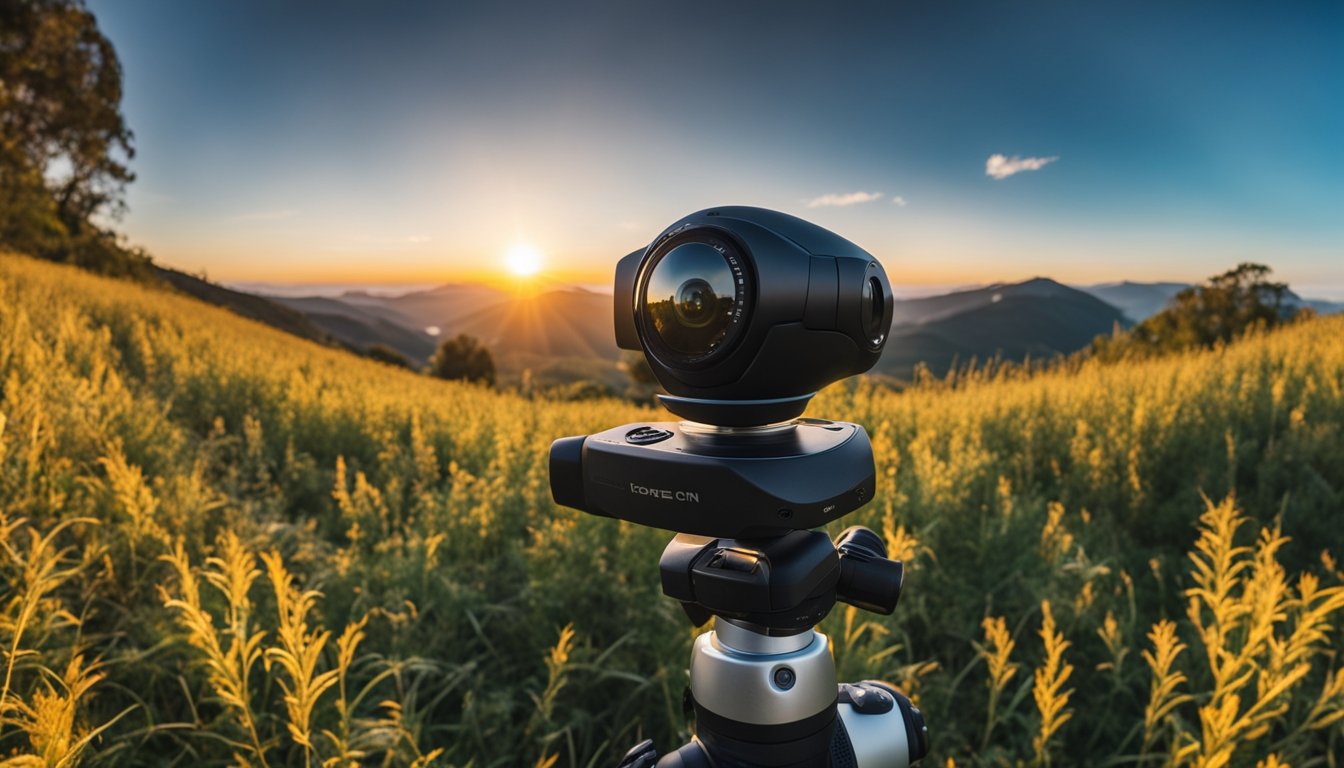
When it comes to choosing a 360 camera, there are several key features you should consider to ensure that you get the best possible results. Here are the most important features to keep in mind:
Resolution and Image Quality
Resolution is one of the most important factors to consider when choosing a 360 camera, as it determines the level of detail in your images and videos. Higher resolution cameras will produce sharper, clearer images with more detail, but they may also be more expensive. Generally, a resolution of at least 4K is recommended for 360 cameras, but higher-end models can offer resolutions up to 8K or more.
Image quality is also influenced by other factors such as dynamic range and sensor size. A larger sensor size can capture more light, resulting in better low-light performance, while a higher dynamic range can capture more detail in both bright and dark areas of an image.
Stabilization and Low Light Performance
Stabilization is an important consideration for any camera, but it is especially important for 360 cameras. Because these cameras capture a full 360 degrees of footage, any movement or shakiness can be amplified and result in a poor viewing experience. Look for cameras with built-in stabilization features, such as gyroscopic stabilization or electronic image stabilization.
Low light performance is another important factor to consider, especially if you plan to use your camera indoors or in low-light conditions. Look for cameras with a wide aperture and larger sensor size to capture more light and produce better results in low-light settings.
Durability and Waterproofing
Finally, consider the durability and waterproofing of your 360 camera. If you plan to take your camera on outdoor adventures or use it in wet conditions, look for models that are waterproof or at least water-resistant. Some cameras are also designed to be shockproof or dustproof, which can be important if you plan to use your camera in rugged environments.
Overall, when choosing a 360 camera, it’s important to consider factors such as resolution, stabilization, low light performance, and durability to ensure that you get the best possible results. By keeping these key features in mind, you can find a camera that meets your needs and produces high-quality, immersive content.
Popular 360 Camera Models
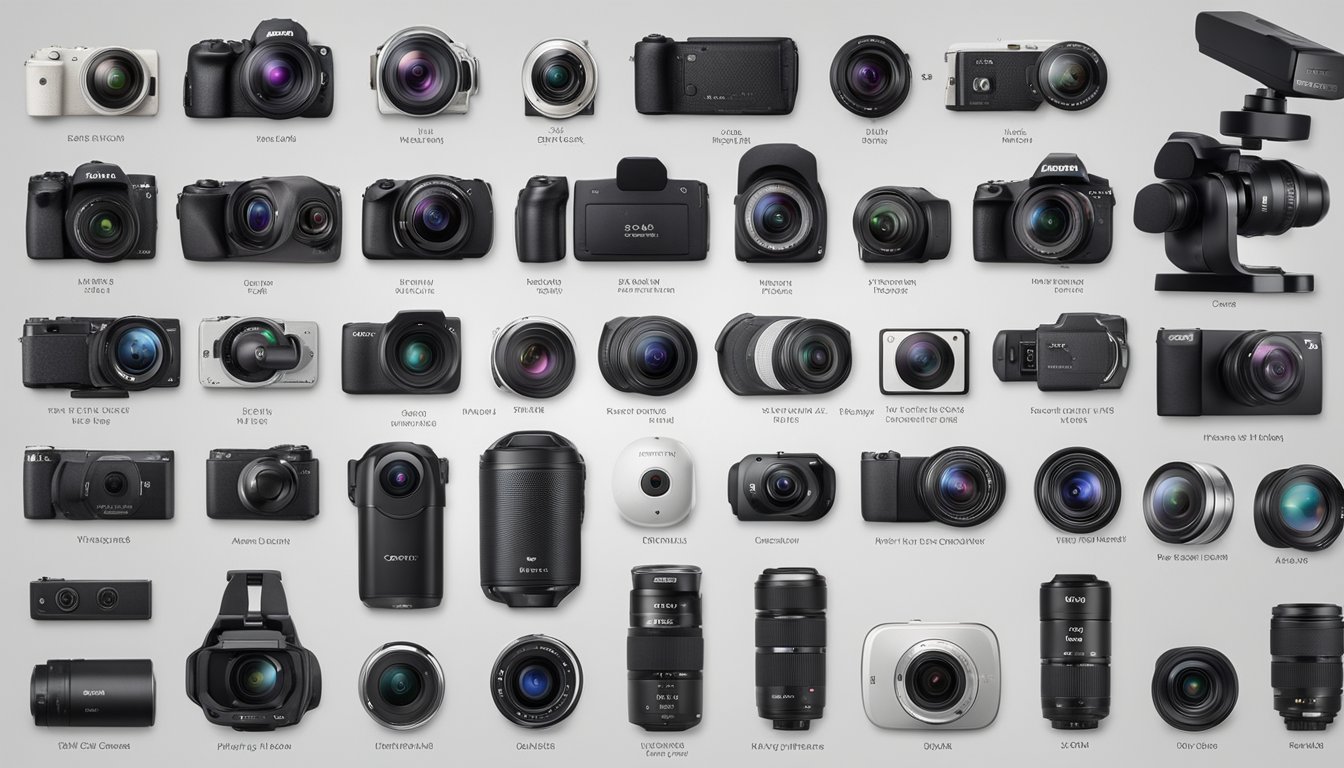
If you’re considering purchasing a 360 camera, you have a lot of options to choose from. Here are some of the most popular models on the market today.
Consumer Favorites
Insta360 One X2
One of the most popular 360 cameras for consumers is the Insta360 One X2. This camera is compact and easy to use, making it a great option for anyone who wants to capture 360-degree footage without a lot of fuss. It can shoot 5.7K video and 20-megapixel photos, and it has a built-in touchscreen for easy control.
GoPro Max
Another popular option is the GoPro Max. This camera is rugged and durable, making it a great choice for anyone who wants to take 360-degree footage during outdoor activities like hiking, biking, or snowboarding. It can shoot 5.6K video and 16.6-megapixel photos, and it has a built-in touchscreen for easy control.
Samsung Gear 360
If you’re looking for a budget-friendly option, the Samsung Gear 360 is a great choice. This camera is small and lightweight, making it easy to take with you on the go. It can shoot 4K video and 15-megapixel photos, and it has a built-in battery that can last for up to two hours.
Professional 360 Cameras
Ricoh Theta Z1
If you’re a professional photographer or videographer, you may want to consider the Ricoh Theta Z1. This camera is more expensive than some of the other options on this list, but it offers a range of advanced features that make it ideal for professional use. It can shoot 4K video and 23-megapixel photos, and it has a built-in OLED display for easy control.
Insta360 One R
The Insta360 One R is another popular option for professionals. This camera is modular, which means you can swap out the lenses and sensors to get the exact footage you need. It can shoot 5.3K video and 19-megapixel photos, and it has a range of advanced features like HDR video and slow-motion recording.
Kandao QooCam 8K
Finally, the Kandao QooCam 8K is a great option for anyone who needs to capture high-quality 360-degree footage. This camera can shoot 8K video and 12-megapixel photos, and it has a range of advanced features like RAW image capture and 120fps slow-motion recording. It’s a bit more expensive than some of the other options on this list, but it’s worth the investment if you need the best possible footage.
360 Cameras for Different Budgets
https://www.youtube.com/watch?v=FqeZGKZfcK8&embed=true
If you’re considering purchasing a 360 camera, one of the first things you’ll need to consider is your budget. Luckily, there are options available for every budget level. Here are some of the best options for entry-level and high-end 360 cameras.
Entry-Level Options
If you’re new to 360 photography and want to try it out without breaking the bank, there are several options available for under $300. One of the top picks in this category is the Insta360 ONE X, which offers 5.7K video and 18-megapixel photos. It’s compatible with both iOS and Android devices, making it easy to use with your smartphone. Another great option is the GoPro MAX, which offers 5.6K video and 16.6-megapixel photos. It’s also waterproof and shockproof, making it a great option for outdoor adventures.
High-End 360 Cameras
If you’re looking for the best of the best when it comes to 360 cameras, there are several high-end options available. One of the top picks in this category is the Ricoh Theta Z1, which offers 23-megapixel photos and 4K video. It also has a built-in OLED display and can shoot in RAW format. Another great option is the QooCam 8K, which offers 8K video and 12-megapixel photos. It also has a built-in touchscreen display and can shoot in RAW format.
Regardless of your budget, there’s a 360 camera out there that will suit your needs. Whether you’re looking for an entry-level option or a high-end camera with all the bells and whistles, there’s something for everyone.
360 Cameras in Action and Adventure
https://www.youtube.com/watch?v=DQJsjzIpbhw&embed=true
When it comes to capturing your action-packed adventures, 360 cameras and action cameras are two of the most popular options. In this section, we’ll explore the benefits of each and help you decide which one is right for you.
Action Cams for Extreme Sports
If you’re into extreme sports like snowboarding, surfing, or mountain biking, an action camera like a GoPro is likely the better option. Action cameras are built to withstand harsh conditions and can be mounted to your gear or helmet for a first-person point of view. They’re also designed to capture high-quality video at high speeds, making them perfect for capturing those thrilling moments.
Travel and Outdoor Exploration
On the other hand, if you’re looking to capture a wider view of your adventures, a 360 camera like the Insta360 X3 might be the better option. 360 cameras capture everything around you, allowing you to relive your adventures in a truly immersive way. They’re also great for capturing landscapes and scenery, making them a popular choice for travel and outdoor exploration.
One thing to keep in mind when choosing between an action camera and a 360 camera is waterproofing. While many action cameras come with waterproof cases, not all 360 cameras are designed to be waterproof. If you plan on using your camera in or near water, make sure to choose a waterproof option.
Overall, both action cameras and 360 cameras have their benefits when it comes to capturing your adventures. It ultimately comes down to personal preference and the type of activities you’ll be doing.
Editing and Software for 360 Cameras
https://www.youtube.com/watch?v=HdvFlaZLk24&embed=true
If you’re interested in 360 cameras, you might be wondering how to edit and process the footage you capture. In this section, we’ll explore some of the software solutions available for 360 cameras, as well as some post-production techniques to help you get the most out of your footage.
Software Solutions
When it comes to editing 360 videos and images, there are several software solutions available. Some popular options include Adobe Premiere Pro, Final Cut Pro X, and CyberLink PowerDirector. These programs allow you to stitch together your footage, adjust the stitch line, and export your finished product.
Another popular option is OverCapture, which is a feature available on some 360 cameras. OverCapture allows you to capture footage in 360 degrees and then “punch in” to create a traditional video. This can be a great way to get the best of both worlds – the immersive experience of 360 video, and the ability to create traditional videos for sharing on social media.
Post-Production Techniques
Once you’ve captured your footage, there are several post-production techniques you can use to enhance your 360 videos and images. One technique is to adjust the exposure and contrast to bring out the details in your footage. You can also use color grading to create a specific look or mood.
Another technique is to add text and graphics to your footage. This can be a great way to provide context or information to your viewers. You can also use transitions and effects to create a more dynamic viewing experience.
Finally, if you’re interested in live-streaming your 360 footage, there are several platforms available, including Facebook and YouTube. These platforms allow you to share your footage in real-time, giving your viewers an immersive experience that they won’t soon forget.
Overall, editing and processing 360 footage can be a bit more complicated than traditional video, but with the right software and techniques, you can create stunning, immersive videos and images that will amaze your viewers.
Sharing 360 Content
https://www.youtube.com/watch?v=T9qslAaN8Vs&embed=true
Once you have captured your 360 content, the next step is sharing it with others. There are several ways you can share your 360 photos and videos, including social media platforms and virtual reality integration.
Social Media Platforms
Social media platforms such as YouTube, Facebook, and Instagram allow you to upload and share your 360 content with your followers. YouTube is the most popular platform for 360 videos, and you can upload 360-degree videos up to 8K resolution. Facebook and Instagram also support 360-degree photos and videos, but the resolution is limited to 1080p.
When uploading your 360 content to social media, make sure to indicate that it is a 360-degree photo or video. You can also add a description or caption to provide more context for your viewers. Additionally, you can use hashtags to help your content reach a wider audience.
Virtual Reality Integration
If you have a VR headset, you can view your 360 content in a fully immersive way. You can also share your 360 content with others who have a VR headset, allowing them to experience your content in a more immersive way.
You can also create 3D VR content and live stream your 360 videos to viewers around the world. This allows you to share your experiences with others in real-time, creating a more interactive and engaging experience.
Overall, sharing your 360 content is a great way to showcase your creativity and share your experiences with others. Whether you choose to share your content on social media or through virtual reality integration, there are many ways to share your immersive content with the world.
Future of 360 Cameras
https://www.youtube.com/watch?v=i8EUerX90-0&embed=true
As the technology behind 360 cameras continues to improve, there are many emerging trends and advancements that will shape their future.
Emerging Trends
One trend that is likely to continue is the integration of 360-degree cameras with other technologies, such as 3D and virtual reality. This will allow for even more immersive experiences and will expand the potential use cases for 360 cameras.
Another trend is the continued innovation in hardware and software. As cameras become smaller and more powerful, they will become more accessible to a wider range of consumers. Additionally, software advancements will make it easier to edit and share 360 content, further increasing the appeal of these cameras.
Advancements in Technology
One of the most exciting advancements in 360 cameras is the use of artificial intelligence (AI) and machine learning. These technologies can help to improve the quality of 360 content by automatically stitching together images and videos, as well as removing unwanted objects and improving image clarity.
Another area of advancement is in the development of 360 cameras that can capture high-quality images and videos in low-light conditions. This will allow for even more versatility in the use of these cameras, making them a viable option for a wider range of applications.
Overall, the future of 360 cameras looks bright, with continued innovation and advancements in technology driving their growth and popularity. Whether you are a professional photographer or simply someone who enjoys capturing and sharing memories, a 360 camera is definitely worth considering.
Frequently Asked Questions
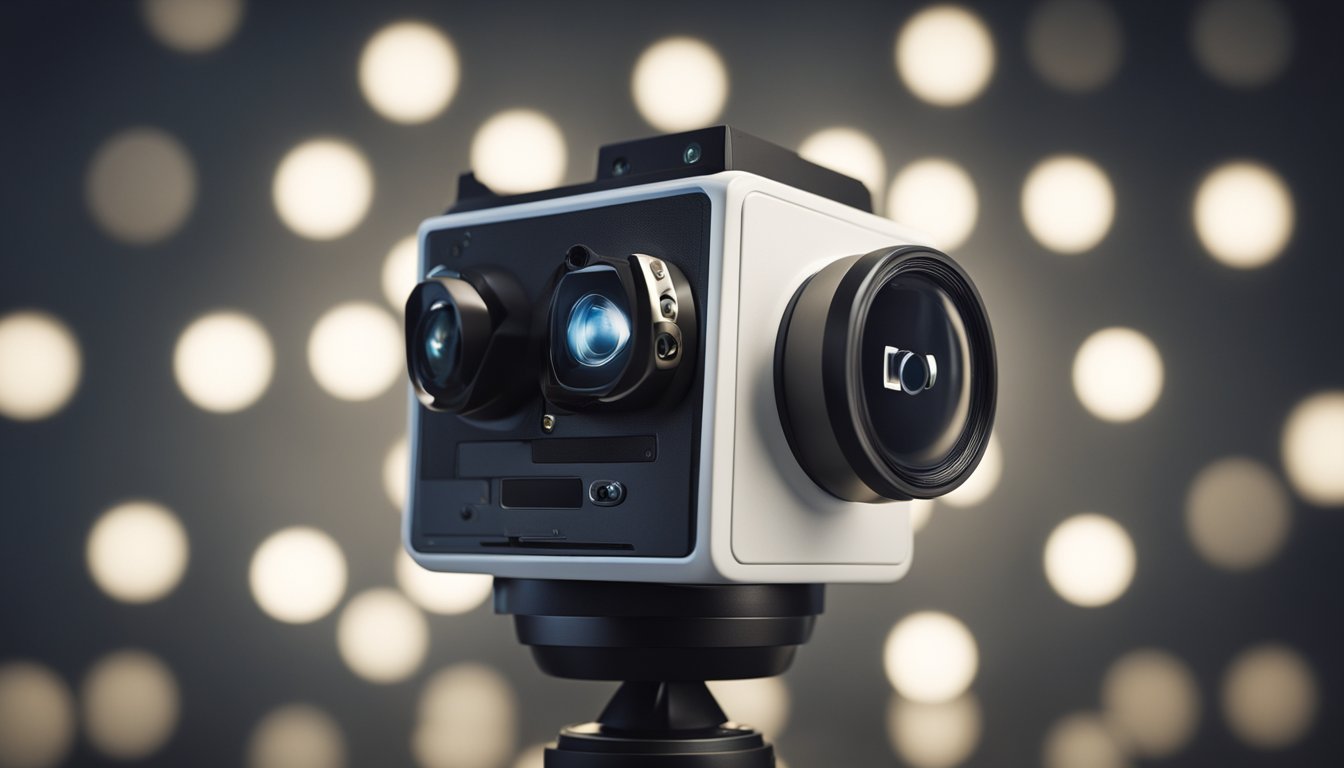
What are the key benefits of using a 360 camera?
A 360 camera allows you to capture a full 360-degree view of your surroundings, offering a unique perspective that traditional cameras cannot match. This can be especially useful for real estate agents who want to showcase a property to potential buyers. Additionally, 360 cameras are great for capturing immersive video and photos, making them a popular choice for vloggers and content creators.
How do 360 cameras compare in price to traditional cameras?
360 cameras can vary in price, but generally, they are more expensive than traditional cameras. However, keep in mind that 360 cameras offer a unique perspective that traditional cameras cannot match, so the extra cost may be worth it for your specific needs.
What should I look for when choosing a 360 camera for my vehicle?
When choosing a 360 camera for your vehicle, you should look for features such as high-resolution video, wide-angle lenses, and image stabilization. Additionally, you may want to consider a camera with a built-in GPS system, which can help with location tracking and geotagging.
Can I find a quality 360 camera without breaking the bank?
Yes, you can find quality 360 cameras without breaking the bank. Some budget-friendly options include the Insta360 One X2 and the Ricoh Theta SC2. These cameras offer many of the same features as more expensive models, but at a more affordable price point.
What are some common drawbacks of 360 cameras?
One common drawback of 360 cameras is that they can be more difficult to use than traditional cameras. Additionally, 360 cameras may not be suitable for all types of photography or videography, and may require specialized software for editing and post-production.
Which car models come equipped with the best 360 cameras in 2023?
As of 2023, many car manufacturers are offering 360-degree camera systems as optional features on their vehicles. Some of the best car models equipped with 360 cameras include the Tesla Model S, the BMW X5, and the Audi Q7. However, keep in mind that these features may come at an additional cost.












